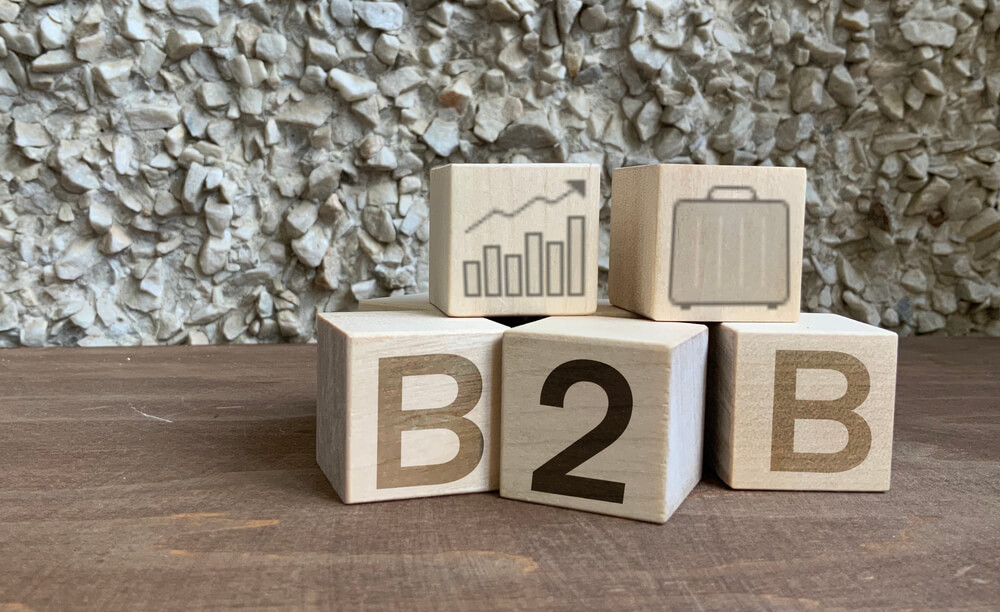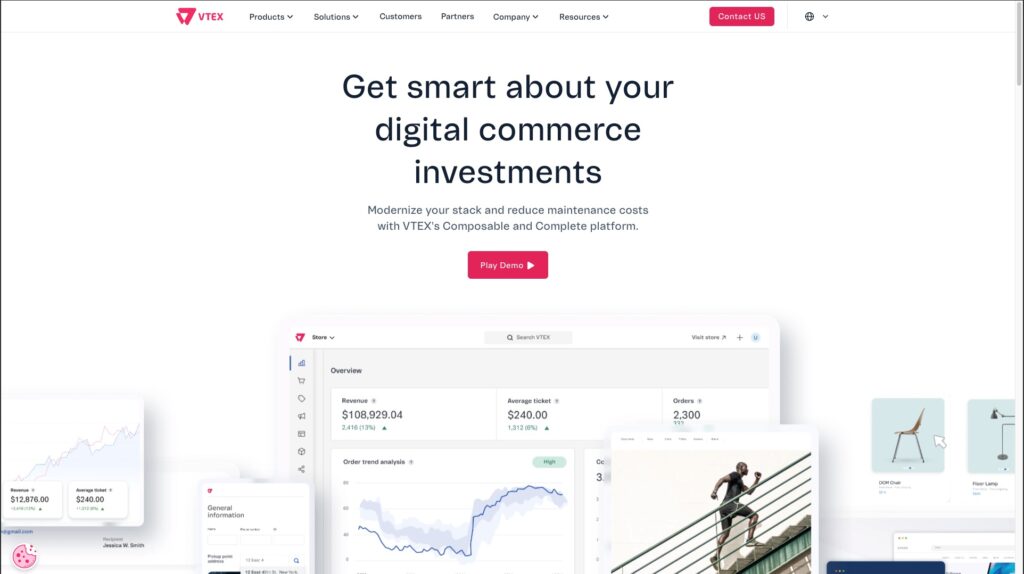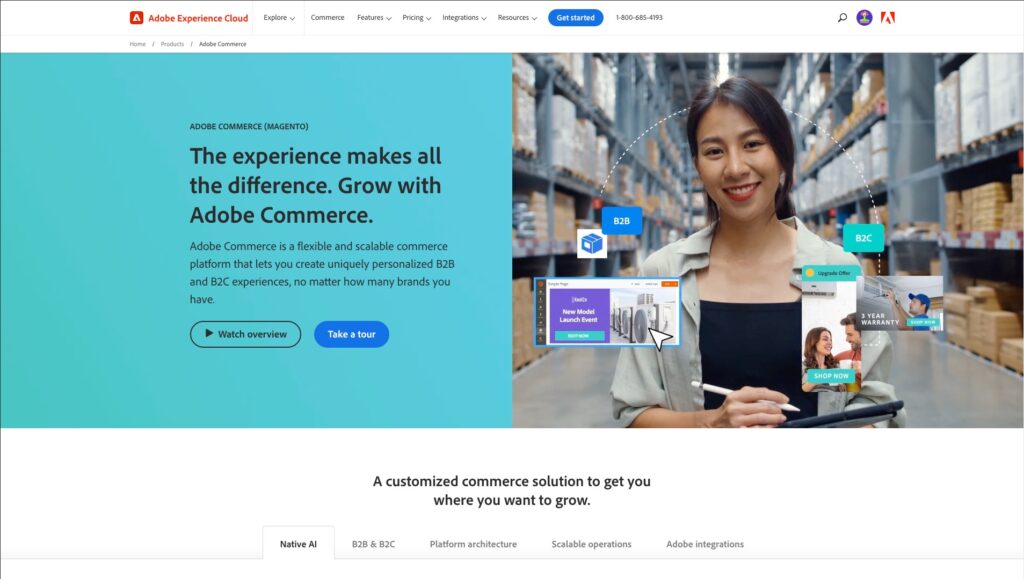No products in the cart.
Email Marketing
Methods, and Platforms for 2024
B2B e-commerce (business-to-business) is a type of e-commerce transaction where businesses buy and sell products and services to each other.
Compared to B2C (business-to-consumer) e-commerce, B2B offers several advantages, including a more sustainable cash flow, greater chances of customer loyalty, agile service, and reduced geographical barriers.
In this blog post, we will discuss how B2B e-commerce works, its main advantages, the types of B2B selling, examples of companies, and more.
What is B2B e-commerce?
B2B e-commerce is a sales channel that focuses on business-to-business transactions. It consists of a virtual store that sells products or services to other companies.
Like a B2C business, each B2B e-commerce has a different size, operation, level of complexity, and business model.
In other words, B2B e-commerce can include several solutions, from digital products to physical products such as machinery, equipment, inputs, consumer goods, packaging, and more.
E-commerce B2B and B2C: What are the differences?
The main difference between B2B e-commerce and B2C e-commerce is that B2B companies sell products such as inputs, raw materials, software, services, and other types of products to other organizations. In contrast, B2C e-commerce consists of selling products or services to an individual rather than a business.
While the target market is the biggest difference, other differences exist between B2B and B2C e-commerce.
Market share
Most people have no idea of the size of the B2B market, but it has a lot of relevance in the market.
For comparison purposes, in 2021, the B2C market moved about $ 4.1 trillion per year worldwide, while the B2B market moved $ 6.88 trillion in the same period.
The B2B market is hot and presents many opportunities for companies focusing on other organizations.
Pricing
Pricing is another factor that differentiates B2B and B2C businesses.
This is because companies, unlike individual consumers, usually buy a much larger product volume, making the average amount spent much higher than in B2C businesses.
For example, while B2C companies focus on selling one or two items per customer, B2B businesses typically sell a product at scale and even offer discounts at volume, making the purchase more enticing.
This applies to the sale of products and services. After all, services provided to other companies are larger and more complex than those provided to the final consumer.
Payment methods
Payment methods also differ significantly between B2B and B2C businesses.
In B2C e-commerce, common payment methods include credit cards, debit cards, cash, transfers, and payment intermediaries like PayPal.
In B2B business, there are other, more flexible payment options, such as installment payment, promissory notes, checks, payments on delivery, and more.
Customer Profile
In B2B business, the customer invests a high value in each purchase and takes more care when analyzing the solutions and proposals, often building a relationship with commercial representatives.
In B2C, the customer is an individual. They make purchases in lower volume and total value and are more easily hit by mental triggers.
Minimum order
Another big difference between B2C and B2C businesses is that, typically, B2B businesses establish a minimum order of units that can be sold per transaction. In B2C business, there is usually no such requirement.
Credit
In B2B e-commerce, to purchase with credit, the customer needs to have good credit history to get approval, especially in transactions where the purchase amount is large with a higher risk.
But this type of situation tends to happen mainly the first time a customer buys from another company with credit because, over time, the company and customer earn trust in each other.
In B2C business, the process is much simpler, with the authorization of payments usually made by the card operator (if it is paid in debit or credit) or by a bank.
Taxes
In B2C business, taxes cover the common taxes of e-commerce, such as ICMS (Taxes on the Circulation of Goods and Provision of Services), CSLL (Social Contribution on Net Income), PIS (Social Integration Program), COFINS (Contribution to the Financing of Social Security), among others.
In addition to all these standard taxes, B2B business taxes vary depending on the municipality of exit and entry, the business category, the product or service classification, etc.
What are the main advantages of B2B e-commerce?
Here are the main advantages of B2B e-commerce:
More sustainable cash flow
B2B e-commerce businesses typically don’t have expenses like mobility and commuting, which benefits the company’s cash flow.
This means money can be allocated to more important areas, such as brand awareness strategies.
Loyalty
Online customer loyalty processes are much more accessible, allowing you to create a customer base that makes purchases periodically, providing constant input to your cash flow.
However, your company must transcend physical distances and provide recordings, photos, and video calls to answer questions and provide personalized service.
Agile service
Another great advantage of B2B e-commerce is that the customer does not have to wait for a face-to-face visit from a salesperson, sales representative, or technician.
Getting a quote or help in case of problems can be done online and usually immediately, saving travel resources, especially if your company opts for a sales CRM.
Reduction of geographical barriers
B2B e-commerce is more effective in overcoming geographical barriers since reaching customers in other states and countries is easier, increasing your perspective of performance and sales.
Types of B2B sales
There are three types of B2B selling: consumption, resale, or transformation. Let’s take a look at the differences between them.
Consumption
With consumption based sales, the customer is similar to a final consumer who is acquiring the product, even if on a large scale, to use them in their operation. Examples of this are uniforms, work instruments, cleaning products, etc.
Resale
Also called B2B2C, selling for resale is when a company sells a lot of a specific product to a customer who, in turn, sells them in their stores to their customers.
Transformation
Finally, selling for transformation is when the customer buys raw materials from other businesses to produce their products.
Some examples of transformation selling are the purchase of soybeans for animal feed, oil for the creation of fuels, or meshes for the production of clothes.
How to choose a good B2B platform for e-commerce
When you choose the ideal platform to host your B2B e-commerce, you need to consider some factors, especially the needs of your business and your operation.
First of all, you need to choose a B2B platform that integrates with the other management tools you use, as this facilitates the execution of the work and saves your team time.
You should also choose a B2B platform that has an easy and intuitive customer onboarding so that anyone interacting with customers can quickly access key information about each customer.
In addition, you should look for a B2B platform that is stable and reliable with minimal downtime.
In terms of marketing software and sales software, try to find platforms that offer marketing automation, email marketing, sales automation, and CRM capabilities.
This way, you can attract more potential leads into your funnel and create a customer journey focused on loyalty through well-structured after-sales.
B2B E-commerce Platform Examples
Here are some examples of B2B e-commerce platforms that integrate with ActiveCampaign:
VTEX
The VTEX platform is a B2B e-commerce platform that is key to driving business. It allows customization of prices, catalogs, and payment terms, meeting the complex B2B negotiations. In addition, it simplifies the management of orders, inventory, and logistics, making the purchasing process efficient.
With data analytics capabilities, VTEX helps companies understand customer behavior and make data-driven decisions, improving sales and marketing strategies. In short, VTEX is a powerful tool that improves efficiency and the shopping experience, driving the success of B2B commerce.
For more information, check out the VTEX website.
Shopify
One of the main advantages of Shopify as a B2B e-commerce platform is the ease of setting up custom catalogs, specific pricing for customers or groups of customers, and the ability to set complex purchase rules.
With its security infrastructure and scalability, Shopify is an essential B2B platform for businesses looking to grow their e-commerce operations. Shopify also offers advanced analytics and reporting capabilities, making it an effective and flexible option that optimizes B2B commerce by offering customization, operational efficiency, and scalability.
For more information, check out the Shopify website.
WooCommerce
The WooCommerce B2B platform allows businesses to easily create and manage online stores customized to meet the needs of B2B commerce. One of its main advantages is the flexibility offered for customization, allowing companies to set up unique catalogs, specific prices for different groups of customers, and complex purchasing rules, which is critical for business negotiations in the B2B scenario.
In addition, it simplifies the management of orders, inventory, and payments, offering flexibility through plugins and extensions to meet the specific needs of companies. WooCommerce helps you create efficient, personalized shopping experiences by improving B2B sales and marketing strategies.
For more information, check out the WooCommerce website.
Magento
Magento offers great products and services, standing out as one of the best platforms for open-source B2B e-commerce, as it allows a high level of customization without losing the stability and security of the pages.
It provides products and solutions for businesses of all sizes, with a page builder and tools for logistics management and intelligent inventory management, as well as an order and fulfillment manager.
For more information, check out the Adobe Commerce (Magento) website.
Conclusion
There are several advantages to selling products and services through an e-commerce platform specifically designed for businesses that want to sell to other businesses.
So, what have we learned about B2B e-commerce? First, it’s a process that, even more so than in B2C e-commerce, requires trust.
Customers must feel confident that they are dealing with a reputable company that will deliver on its promises.
Second, your company’s website needs to be easy to use and with the most relevant information easily found and explained, or the other companies won’t buy from you.
Finally, the right tools can help make buying easier for buyers and sellers.




